|
The holiday season is usually the most difficult time of the year for families who have lost loved ones. Empty seats at the table or around the tree are painful reminders of those who are no longer with us. For so many of these folks, death and the holidays just aren’t a great combination. For the makers of holiday movies, though, death is a favorite — if not necessary — ingredient in the recipe for a Hollywood-worthy happy ending. But as with most every element of these addictive stories, death itself, and the realities surrounding it, aren’t part of the fantasy. hallmark's holiday happinessThere’s plenty of Christmas content out there, especially with today’s multi-device streaming options. Even so, Hallmark — yes, the greeting card company — has become the go-to source for a particular type of holiday movie. Each year, the original Hallmark Channel and its suspense-filled spinoff, the Hallmark Movies & Mysteries channel, switch to an all-holiday lineup sometime in late October. Up to 50 million viewers devour at least one Hallmark holiday movie every year. So what makes these movies so darned popular? As someone who fits right into the networks’ target demographic (women aged 25 to 54) and has admittedly fallen under the Hallmark movie magic spell, I’ll attempt to explain. Simply put, Hallmark movies are an indulgent, uplifting escape from reality. Unlike real life, every single Hallmark movie, even a mystery version, has a happy ending. Viewers take comfort in the fact that before the credits roll, all loose ends will be tidily tied up, the always-attractive main characters’ life-altering decisions will be made and their problems solved, and every featured individual/couple/family will send us off as they hug, kiss, and/or sport happy, huge smiles. For two hours at a time, we can forget our imperfect, busy, or boring lives and imagine that it’s actually possible to travel back in time, to serendipitously reunite with your childhood sweetheart, for the prince of an enchanting (if mythical) kingdom to fall for an American commoner, for beloved Main Street businesses at the brink of bankruptcy to be saved in their final hours, or that a sophisticated and successful big-city girl can find happiness in her hokey-yet-charming hometown LIFE — AND LOVE — AFTER DEATHEvery holiday season, Hallmark movie writers crank out dozens of new titles (there are 40 first-run options in 2020 alone) that put a new spin on these timeworn tropes. No matter the storyline, though, the inevitably neat ending nearly always includes the coupling of two unusually good-looking adults. Most often, at least one of these individuals is a widow or widower (sometimes with one to three precocious, adorable children) still mourning the death of their impossibly perfect, seemingly-irreplaceable spouse. Take a look at these excerpts from some of 2019’s and 2020’s plot synopses: “Bakery owner Molly meets Josh, a widower who recently moved to town with his young son…”
“Newly widowed Kathy plans to skip out on decking the halls and trimming the tree this Christmas, trying to avoid anything that will bring back memories of her late husband…”
“The distraction comes in the form of a young boy, Danny, and his widowed father…”
“As she prepares for an interview for an overseas position, she decides to work as an au pair for widowed father Owen Reed and his three children…” In a post entitled “What’s With All the Dead Parents in Made-for-TV Christmas Movies?” writer Brian Moylan explains the necessity of holiday movie deaths in this way: “[These movies] need to be about people who suffered some tragic loss, and then find their way whole again through the magic of holiday romance. The ultimate Christmas gift, they’re telling us, is a happy nuclear family, even if it’s one that has known the taint of sorrow.” death as opportunityBeautiful widows and handsome widowers falling in love isn’t the only death-related plotline in these films. The death or impending demise of a parent sometimes serves as the impetus for new opportunities for the main characters. A daughter returns to her hometown to take over her deceased parents’ business or sell her family home, or a prince becomes king when his father dies … which puts them in a perfect position to fall in love with the real estate agent/contractor or search for a suitable queen. Here are a few other recent Hallmark movie plots that depend on death to make the movie’s magic possible: “When Melody’s neighbor, Nina, learns that her illness has returned, Melody promises to keep Nina’s kids, Holly and Ivy, together…”
“On the verge of accepting a job in L.A., [Sue] receives a visit from the ghost of her recently deceased mentor, Marilyn…”
“Lucy grants a little girl’s wish for a Christmas like she used to have with her [late] mom…” In real life — and especially as members of the deathcare community — we know death doesn’t usually open doors to fabulous new lives. Widowers often remain widowed for the rest of their lives, people inherit problems instead of property, and grief manifests itself whenever, wherever, and within whomever it wants in very different ways, for as long as it likes. where's the retort?Although the Hallmark Christmas movie machine embraces and leverages the concept of death in its plotlines, it’s quite rare to see the mechanics of deathcare portrayed on the screen. Viewers usually learn of the deceased spouse or parent early in the story — a widow lovingly holds a framed photo of her late husband and tells him how much she misses him or how she doesn’t know how she’ll go on without him, or someone shares their condolences about the passing of the main characters’ parent as she packs her suitcase for her trip home. Every so often your clue is an urn on a mantle or someone kneeling by a headstone engraved with “Loving wife and mother” and two dates illustrating a sadly short life span. Off-season made-for-TV movies may show a smattering of black-clad mourners at the tail-end of a graveside service or a dramatic outburst during a wake in the deceased’s lovely home. There’s no place for these realities in the Christmas movie fantasy, though. Maybe there’s too much snow dreamily falling for a graveside service, or a funeral couldn’t be scheduled around the town’s traditional Christmas play/community tree decoration ceremony, or perhaps a funeral home isn’t as storybook-worthy as the village toy shop, cafe, or bookstore. Most likely, it’s because ugly crying isn’t pretty, and real death and its accoutrements are sad. In Hallmark holiday movies, crying is only allowed when it’s done daintily and sadness is an emotion reserved for the five-or-so-minute climax of the plot, right after the couple that was destined to be together has an argument, but before they inevitably see the error of their ways and reunite. There’s also no place in Christmas movies for funeral directors, arrangement meetings, casket rooms (or caskets themselves, for that matter), embalming, or crematories. Viewers don’t want to hear eulogies or watch people file through a visitation line. They know someone has died, but they don’t want to deal with the death. If you have time this season, find a Hallmark Channel (or Lifetime, or even Netflix, for that matter) and escape into one (or six) of these Christmas movies — it’s a proven winning formula, so they’re easy to find, especially these days. Pay attention to the role death plays in the plots, and how it’s portrayed. Let us know if you find one that does justice to the deathcare profession. Or create your own Christmas movie storyline: A single and gorgeous fourth-generation funeral director is about to lose his family’s funeral home, but while meeting with a grieving family he catches the eye of the deceased’s newly-wealthy daughter … Wow — this stuff practically writes itself! This post originally inspired by CANA Executive Director Barbara Kemmis's member message from November 2020, but it inspired more than this post!
CANA Member Holly Baxter Bridgers of Baxter Cremation Service sent a delightful Hallmark Card sharing her love for Hallmark Christmases and our association (with the clever image below) — not to mention her own Hallmark movie pitch starring a beautiful funeral director: When the winter festival location is suddenly unavailable, why not have it at the local crematory with the single funeral director... Barbara Kemmis joined in the fun with her own pitch: Single career woman (SCW) returns to home town and reunites with her sassy best friend (SBF) from high school. SBF is a funeral director and privy to all the town goings on, including the fact that SCW's old flame is back in town. During the community memorial service at the funeral home, SCW is reminded how important community and connections are and sparks fly with old boyfriend.
Producers can contact CANA for more information on these fantastic ideas for next year's new Christmas Classics. Happy Holidays from all of us at CANA!
Growing up as the daughter of a traditional funeral director, I never would have imagined that five decades later I would be caring for those grieving the loss of a pet. Back in 1972, when my father first began taking calls from clients wanting burial and cremation services for their pets, it was considered “taboo.” In other words, “People just wouldn’t understand.” I have vivid memories of my father telling stories of how clients would request that he arrive in an unmarked vehicle and that he come after dark because they did not want their neighbors to know they were caring for their pet in this way. Can you imagine not being able to openly grieve or mourn a loss that was so emotionally devastating to you? Fast forward to today, where, according to the American Pet Products Association, over 67% of the US population now owns a pet, and 45% own more than one pet. Expenditures for pets are expected to surpass $99 billion in 2020, so it is easy to see that our pets have truly become members of the family. In fact, a 2001 survey from the American Animal Hospital Association revealed that 83% of pet owners refer to themselves as pet parents. For those with value added services marketing to the pet sector, how care is communicated to those pet parents is important and can be the difference in building and sustaining lifelong relationships with pet families. the human-animal bondDid you know the human-animal bond dates back more than 16,000 years? Burials for pets have been found in Germany from 14,000 BCE, in North America from 11,000 BCE, and China from 7,000 BCE. Alexander the Great owned a mastiff named Peritas. When Peritas died, Alexander led a sizeable funeral procession and burial, erected a large monument, and ordered the locals to honor his dog’s death every year with a festival. The human-animal bond is strong. Whether it is a furry child to empty-nesters, a best friend to the children in a family, or an only companion during a major adult life change, we should not be surprised when a pet parent seems to be “over the top” in how they choose to honor their beloved furry family member. The grief can be overwhelming. I’ve often heard, “This has been more difficult than losing a human family member.” The bond with a pet is like no other relationship; there is no emotional baggage, there is just pure, unconditional love. That can be hard to find by today’s standards. It is no wonder that pet parents today are seeking more personalized caring services for their beloved furry family members. Whether it’s holding a viewing with family and friends, conducting an informal ceremony to scatter cremated remains, taking part in a witness cremation, or being able to choose the perfect personalization for the right urn, pet parents don’t just want choices – they need choices. As pet bereavement experts, it is important that we don’t shut those opportunities off during the decision-making stage. Making sure these options are known to the pet parent can become part of their healing process. Like planning a service for any human, we shouldn’t assume every pet parent desires the “standard service.” Pet parents need to be able to honor the emotional bond they held with their beloved furry family. a pet parent's griefI recently had the honor of working with Jennifer Werthman, Education Director for CANA, and Debra Bjorling, owner of Hamilton Pet Meadow in New Jersey and Past President of the IAOPCC. We were working collaboratively to develop the new, online version of the IAOPCC’s Pet Bereavement Certification Level 1 Program. As we talked through the many phases of the program and the more unusual stories of grief that we had experienced with pet parents, it struck me as to how universally similar the stories often were. At the heart of every pet parent is the need to grieve, the need to know they are being heard, and the need for an empathetic and understanding voice. After 32 years of working with pet parents, I know it can be easy to find yourself on autopilot and focusing on the details of the arrangements, urn personalization, and memorials rather than the grieving person in front of you. But I also know that what determines a lasting relationship with any pet parent is being able to effectively communicate care and concern for their loss and express a willingness to actively listen to their pain. We all are aware of the varying stages of grief: Shock, Denial and Disbelief, Anger, Guilt, and Resolution. But are we committed to communicating well at every stage of a pet parent’s grief, both verbally and non-verbally? Knowing what to say and what not to say to a pet parent who is experiencing shock, profound sadness or unbridled anger is important. It can calm or escalate a situation. We live in a culturally diverse society with different backgrounds, religious affiliations and beliefs about pet death. Words can have consequences. Make sure you and your staff know how to respond to that inevitable question that anyone dealing in pet aftercare has been asked: “Will I see my pet in Heaven?” How you answer can have profound consequences. We all know words have impact and making sure we are dedicated to best practices for ourselves and our staff can be life-changing for others. Training in pet bereavement is the key to good foundational practices. Our non-verbal cues have just as great of an impact. Our body language, tone of voice, and inflection convey a lot to a pet parent who is overcome by grief. Because you are dealing with families in a highly emotional state, your body language and vocal tone are essential to creating rapport and building trust. People know when you are being real and when you are giving “pat answers.” Being authentic is important. As anyone working with pet parents will tell you, a pet parent can always spot another pet parent! One of the more exciting sections of our online program covers these detailed specifics. It provides a real opportunity to check ourselves, our language, our demeanor, the way we carry our body, and the pace at which we move. We learn how to responsively listen and how to apply reflective listening dramatically improving our communication skills to grieving families. challenging family interactionsDuring our work together, I found myself learning new ideas, getting a refresher on my non-verbal cues, and forming new de-escalation and de-stressor techniques. It can be a challenge to work with pet parents who have an especially difficult time due to extenuating circumstances. Whether it is a lack of social support, pre-existing mental health conditions or an emotional sense of responsibility for the death of the pet, these challenges can require inside knowledge of how to best serve the pet parent. As we built the course, we were able to share direct personal experiences of unusual circumstances and unique requests – how do you respond when a pet parent asks you to remove the paw for them? How do you react and what do you say to a pet parent that is convinced their pet is still breathing? We laid out important steps to take when approaching challenges, including emergency situations requiring immediate medical assistance – when do you call for help? Asking the right questions, knowing how to identify key risk factors and finding ways to take quick and decisive action is important for us to know, and, more importantly, for our staff to know as well. Education and training on how to handle difficult situations before they arise is key for all of us! best practicesAs a third-generation family business, my father, Doyle L. Shugart, raised my brothers and I to believe that we are each here on purpose and for a purpose. We all have a higher calling in life, and how you prepare for that calling can impact and change the lives around you. As a past president of the IAOPCC, he was dedicated to continued education. In fact, the IAOPCC’s Educational Scholarship is named in his memory. Making sure we take advantage of every training opportunity available at our fingertips is the only positive during this post-pandemic time. Making sure we as well as our staff are well-trained and prepared to handle any and every situation in a culturally divisive world should remain at the top of our priorities – it can be the difference in building and sustaining relationships and your business. My father often referenced the famous quote attributed to Maya Angelou, impressing it on us: “People may forget what you did for them, but they will never forget how you made them feel.” Forty-nine years after he started our family business, his words still ring true. Your actions can have a profound impact on a pet parent’s grief experience. Learning best practices ensures your families receive all of the options, the best possible care, and your professional expertise to ease the burden of their loss. Announcing the Online Pet Bereavement Certification Level 1 developed in partnership with IAOPCC and CANA. Pet funeral directors and arrangers can now get certified online, on their schedule, at their pace and at home! Learn more at www.cremationassociation.org/PetCremation.
“Offer all of the options, to every family, every time.” – Dave Daly No matter a family’s religion or cultural background, there will be times when it is appropriate for a family to see the disposition to completion, wherever it may be. When I served my first Hindu family during my internship, I was struck by the reverence, the beauty and meaning imbued in the ritual of the sendoff at the crematory. Perhaps the West Coast is unique in that many of the families we served in that region were already familiar with witness cremation, even if they did not have a religious requirement to do so. It was not until I moved back to the Midwest that I learned that so many funeral directors and consumers found the concept of going to the crematory shocking. Families’ imagination is often far worse than the reality of cremation. Many may envision a stark, cold, clinical environment that smells like a hospital. They may imagine a chamber full of flames, and that the entire process is short, lonely, and perfunctory. This is why families are less likely to ask, When will we be able to watch the cremation? as they would be to ask, When will we be able to watch the lowering of the casket into the grave? Typically, this is an offer that the funeral director poses to the family who may need time to decide if that is something they can handle. a historyFrom the late 1890s until the 1930s, the profession had invited the family to attend the cremation, as many marble-walled crematoria began to be built in Europe and North America (Jupp, 2005). Early cremationists treated the cremation ceremony in a manner virtually identical to committals. However, postwar funeral reform in the U.S. began to treat cremation as a threat to the industry, with several professional associations focusing on how to deal with the “problem of cremation.” Too many American funeral professionals determined that cremation was ugly and even our contemporary books on cremation describe witnessing ceremonies in a negative tone: “As late as 1932, the Forest Home Chapel and Crematory in Milwaukee was encouraging family members to witness the placing of the corpse in the cremation furnace” (Prothero, 2002). putting the service back in cremationIs the consumer to blame for direct cremations? Or, as a profession, have we urged families away from ceremonial cremation in the hope that families who desire more time and a chance to say goodbye will opt for casketed burial instead? It is my belief that we are doing a disservice to families who select cremation if we do not offer them an opportunity to witness their loved one being laid to rest. Most funeral directors will invite the surviving family to be present at the graveside service. Witnessing the remains being placed into the chamber is like watching a casket be lowered into the grave, but for cremation. Similarly, this event creates a lasting memorial and final farewell for the family. Offering ceremonial witness cremations to families allows a unique, hands-on experience that creates an additional opportunity for the family to gain closure in a meaningful way. When we set up a graveside service, we plan for ceremonial comforts: a tent, chairs, perhaps an ice bucket filled with bottled water and, more often than not, someone to officiate the ceremony whether this is a clergy member, celebrant, family member or the funeral director. There is a prescribed and widely accepted order to the event. To appropriately create this memory of physical separation from a loved one’s remains for our families who select cremation, we need to ask ourselves some questions and shift our own perspectives. a standard of excellenceWhen was the last time you had a client family ask for a three-day viewing in a Promethean bronze casket with limos for everyone and a plot in the highest spot in the cemetery that overlooks the lake? The fact is that we will continue to serve a growing number of cremation families in the future. Why not create a standard of excellence in your market for cremation ceremonies imbued with meaning and ritual. Regardless of the type of disposition, families want to ensure that the remains they are entrusting into your care are that of their loved one. Witness cremation ceremonies offer both an opportunity to gather in remembrance of the departed as well as rapport-building transparency with positive identification of the deceased. Families will consider your firm as more credible if you have nothing to hide, and many will want to participate in the hands-on experience of saying goodbye. Seeing their loved one right before the cremation—and potentially participating by initiating the cremation process—will help create a peace of mind, dispel fears about the process, and create greater goodwill and trust. It will allow the families you serve to recognize the permanence of death (Wolfelt, 2016). witness best practicesAs the public becomes more familiar with “do-it-yourself” and hands-on experiences, while self-educating about cremation, it makes sense to offer private crematory experiences as part of our standard services just as we include visitations and graveside ceremonies. Let’s consider the optics of practicing witness cremation ceremonies. When my mother passes, I plan on being present at the crematory to see my mother one last time. Will I be comfortable with her being cremated in a cardboard alternative container? I consider myself a pragmatist, but it would be much harder for me to select a minimum cardboard container over an alternative cremation option that comes with a pillow and is the same color as all her furniture. Even though I know, rationally, that it will be consumed during the cremation, the likelihood of upgrading my mother to a ceremonial cremation container is 100%. Even if not embalmed, setting a decedent’s features and performing a minimum preparation of remains should be planned for regardless of whether the family has expressed a desire to view the remains at the crematory. The majority of crematory operators I have worked with in the past have told me that if a family is willing to travel to the crematory, then there is a greater chance that they may wish to view the remains at the time of the cremation even if they were previously undecided about viewing. As with planning any other type of service, it is important to allot enough time and set expectations and constraints to the family, the funeral home, and the crematory. This will require clear communication between all parties involved to schedule a well-organized event. Families want a memorable and favorable experience; they do not want to feel rushed. As the families we serve become increasingly participative, including them in the planning and tone of this event lends them a greater sense of control. Survivors may opt to place special photos, letters, or trinkets into the cremation container; they may wish to have a significant song played while their loved one is being placed into the chamber. The benefits outweigh the additional time and effort spent planning the service. COMMUNICATING WITH FAMILIESFear comes from a loss of control. Not having a realistic picture of what the crematory looks like, feels like, smells like, or sounds like will cause undue stress. It is important for practitioners to help their client families understand what to expect so they will know what the outcome of the event will be and rest at ease knowing that nothing terrible will happen, like their imagination suggests. There are several opportunities to convey the value and experience of witness cremation ceremonies: wherever you explain what services you offer. This service should appear on your General Price List, under the Services tab of your website, and be addressed during the arrangement conference with every family who selects cremation. Several funeral homes have the witness cremation option built in to their cremation authorization form, where the authorizing agent will initial “Yes, we want to witness the cremation and here are the names of the people who will be present”, or “No, we would like to opt out of that ceremony.” If appropriate, a gallery of photos or YouTube video can give a sense of the crematory, so you do not have to schedule a pre-cremation tour of the space (although an open-door policy is a recommended best practice). When making funeral arrangements, a consumer may not have enough background information to understand what you are asking if you say, “Do you want to witness the cremation?” Without context, this sounds more like a threat, rather than an invitation. Over time, a funeral arranger can become more familiar with how to present witness cremation experiences by explaining the ceremony and inviting the family to be present for the event. Here’s a sample script: “The cremation will be held at our crematory, which is located at our funeral home and cemetery on the northside. There, your mother will be held until the day and time that the cremation will occur. Our crematory allows for immediate family to be present to watch the cremation container be placed into the cremator. We welcome you to be present for one last goodbye in your mother’s send-off, which is completely optional. If you are interested in this, please initial here on the cremation authorization where it says, ‘Yes, family present.’ I will contact the crematory operator to schedule a time. I will be there with you by your side and if you wish to start the cremation process, you have the option of pushing the button.” Whether your crematory space is “industrial,” or built specifically to host families for witness ceremonies, managing that expectation is key. Would heavy rain deter you from attending the graveside of your spouse or parent? If not, then a “no-frills” functional crematory space should not be a deterrent for a family, but having a weather forecast and knowing ahead of time to bring rain boots is always appreciated. In an ideal world, every family who selects cremation would be present to see their loved one. If that were the case, the chances of an erroneous cremation would be nearly impossible. Realistically, the percent of families who choose to be present at the graveside to see the casket lowered is likely what you can expect of families to witness cremations. As with a burial or any ceremony in funeral service, there must be an order of events to ensure a smooth cremation. Funeral directors must partner with crematory operators and schedule times for witnesses at the crematory’s discretion (e.g., “The crematory operator says that we can plan the witness ceremony on Tuesday at 1:00 pm. Does that work for your family?”). overcoming concernsIf you have a distrusting family who does not want to “receive someone else’s ashes”, crematory experiences are the solution. You can collaborate with the crematory operator to allow the family to be present for the transfer of their loved one’s cremated remains to the urn, giving the family a greater sense of trust and peace of mind. It is critical to coordinate the scheduling with the crematory. It may make sense to hold the witness cremation as the last one of the day and schedule the pickup of the urn for first thing in the morning; this gives the crematory operator ample time for overnight cooling and an additional opportunity for the family to watch the identification process post-cremation. Many funeral service providers may be reluctant to offer witness cremation ceremonies because it is more work. But you would be surprised by the number of “direct cremation” families who are ready and willing to see their loved one, they just did not know it was an option. We don’t know what we don’t know. It doesn’t hurt or cost anything to ask those you serve if they want to press a button, place the cremation casket into the chamber, insert a letter or drawing from a child in the cremation container, or order flowers when they see a photo of an all-concrete crematory space. Giving the consumer a say in the cremation service helps add value to the experience. It offers another opportunity to mourn and be together in a difficult time. Plenty of funeral homes routinely ask the family if they want to see the lowering of the casket during a graveside service. Why not start with witness cremation ceremonies? Heather Braatz takes a deep dive into "Witness Cremation Ceremonies" at CANA's Virtual Cremation Convention on August 5. The session will focus on differentiating your cremation business by providing witness cremation choices to families and practical guidance on how to add value through ceremony. See what else CANA has planned and register at goCANA.org/CANA2
GRIEF CAN'T WAIT: 5 STRATEGIES TO ENGAGE YOUR COMMUNITY VIRTUALLY DURING SOCIAL DISTANCING6/17/2020
Lately, we’ve all had to reassess the way we do things. Talking to people in your community is different now that most of it isn’t done face-to-face. Fortunately, you can still make meaningful connections, just a in a new way. We must now lean more heavily than ever on technology to connect with our communities. During social distancing, the ways you used to engage and connect with your families don’t always work, but you know grieving families need your support now more than ever. Grief just can’t wait, and families need you as a guide. As a funeral director, you’re already a problem solver, so think about lending support to those grieving in a way you never have before. Think differently, and think digitally. Here are five strategies to engage your community virtually during social distancing so you can continue to serve your families in an effective and valuable way. 1. Host Virtual EventsIf events were part of your marketing outreach before the pandemic, make them part of your efforts now, too. Just make them digital. When you plan digital events, thinking outside the box goes a long way. We’ve seen a number of firms use digital events to engage with their community and keep their outreach going. For instance, you can use inexpensive apps to engage your community online. You can learn more about how Guam Windward Memorial did just that in this interview using digital scavenger hunts coupled with community bingo sessions. These fun-focused events engage your community and highlight your brand rather than directly marketing preneed or at-need services. When creating virtual events focused on engagement, spend a little time brainstorming things your community likes to do and how you can create a digital space to come together around those things. It could be a sport, a community landmark, or a recurring community event like a parade. If you are ready to dive back into preneed events, hosting digital ones provides an opportunity to personalize your education more than you did in the past. When you host an in-person preneed event, most firms need to reach a broad audience for better attendance since in-person events take more resources (cost, set up, time, etc.) than digital ones. However, when hosting a virtual preneed event using a video conference call, like Zoom, less prep is required so you can hyper-focus your event. Consider promoting events specifically catering to the needs of a target audience: veterans, religious groups, recent widows or widowers, or any other specific group in your community. Personalization like this has been proven more effective because people feel you are speaking directly to them and meeting their specific need. Thus, hosting smaller, highly targeted video events increases your chance of winning these individuals over. 2. NEW WAYS FOR PEOPLE TO CONNECT: |
| Heather McWilliams Mierzejewski brings marketing and additional writing expertise to the Funeral Innovations team. She previously covered breaking news, politics, and religion for print, digital and radio news outlets before slipping journalism’s tentacles and diving into the digital marketing world. She spent the past 3+ years at a digital advertising agency working on marketing and content solutions for adidas, Reebok, and Chipotle among other brands. When not on the prowl for killer marketing stories, Heather spends time with her active kids and rides her bike on the Colorado byways. She’s always looking for new riding buddies. |
| Welton Hong, is the founder of Ring Ring Marketing® and a leading expert in creating case generation from online to the phone line. He is the author of Making Your Phone Ring for Funeral Homes, 2019 Edition. |
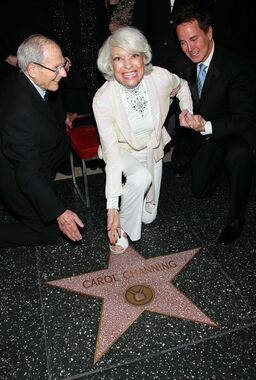
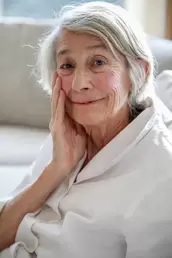


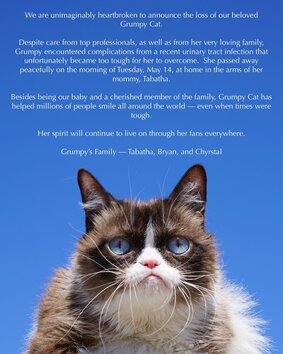
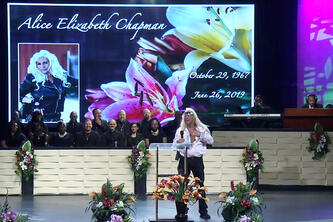

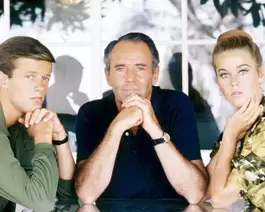
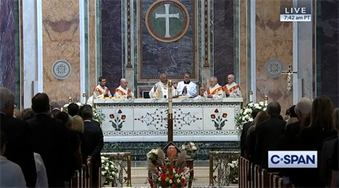
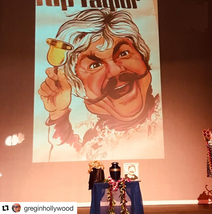
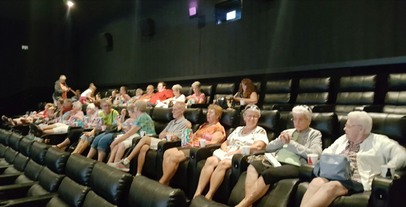
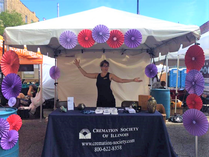
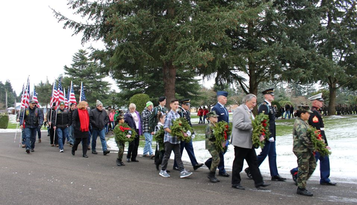

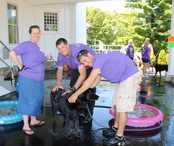
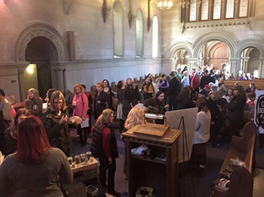
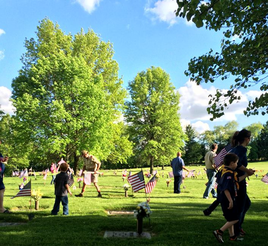
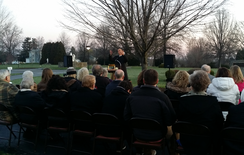
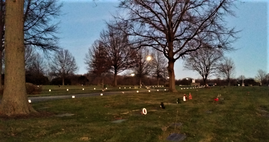
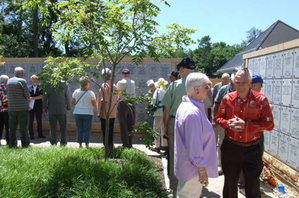
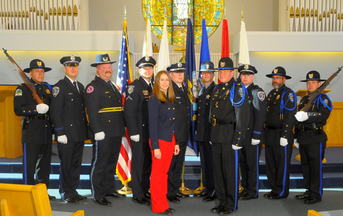
| Julie A. Burn is a cremation specialist with over 28 years of experience in the funeral profession. She has served as the director of cremation services for StoneMor Partners and the International Cemetery, Cremation and Funeral Association and as the manager of cremation services for Wilbert Funeral Services. Burn served on the board of directors for the Cremation Association of North America from 2000-2003, and currently serves as a consultant to CANA on their educational online training program. Julie holds the designation of Certified Cremation Executive and Certified Supplier Executive and is a Certified Celebrant. |
| Rhonda Montgomery, Ph.D. is the Department Chair of the Food & Beverage and Event Management Department in the William F. Harrah College of Hotel Administration. She conducts research and has written articles on the social psychology of purchasing decisions and customer loyalty for meetings, conventions and festivals. She has also written numerous books in the areas of meetings and conventions, private club management and the first-year experience. |
| Rhonda Montgomery, Ph.D. is the Department Chair of the Food & Beverage and Event Management Department in the William F. Harrah College of Hotel Administration. She conducts research and has written articles on the social psychology of purchasing decisions and customer loyalty for meetings, conventions and festivals. She has also written numerous books in the areas of meetings and conventions, private club management and the first-year experience. |
| Gail Rubin is a Certified Thanatologist (a death educator) who teaches about pre-need funeral planning and end-of-life issues, using humor and funny films to reduce resistance to discussing death. An award-winning speaker, she “knocked ‘em dead” with A Good Goodbye, a TEDxABQ talk which provides a compelling online video supporting pre-need funeral planning. She’s the author of three books on end-of-life issues, one of the first people to hold a Death Café in the United States, and the coordinator of the Before I Die New Mexico Festival. Her website is www.AGoodGoodbye.com. |
Cremation experts share the latest news, trends, and creative advice for industry professionals. Register or log in to subscribe and stay engaged with all things cremation.
All
Aftercare
Alkaline Hydrolysis
Arranging
Body Preparation
Business Planning
Celebrants
Cemetery
Communication
Consumers
Covid19
Cremation Specialists
Education
Embalming
Events
Green Practices
Grief
Guest Post
History
Hr
Inspiration
Installation
Leadership
Manufacturers
Marketing
Memorialization
Personalization
Pets
Preplanning
Processes And Procedures
Professional Development
Public Relations
Safety
Selfcare
Services
Statistics
Storytelling
Suppliers
Technology
Tips And Tools
Transportation
May 2024
April 2024
March 2024
February 2024
January 2024
December 2023
November 2023
October 2023
September 2023
August 2023
July 2023
June 2023
May 2023
April 2023
March 2023
February 2023
January 2023
December 2022
November 2022
October 2022
September 2022
August 2022
July 2022
June 2022
May 2022
April 2022
March 2022
February 2022
January 2022
December 2021
November 2021
October 2021
September 2021
August 2021
July 2021
June 2021
May 2021
April 2021
March 2021
February 2021
January 2021
December 2020
November 2020
October 2020
September 2020
August 2020
July 2020
June 2020
May 2020
April 2020
March 2020
February 2020
January 2020
December 2019
November 2019
October 2019
September 2019
August 2019
July 2019
June 2019
May 2019
April 2019
March 2019
February 2019
January 2019
December 2018
November 2018
October 2018
September 2018
August 2018
July 2018
June 2018
May 2018
April 2018
March 2018
February 2018
January 2018
December 2017
November 2017
October 2017
September 2017
August 2017
July 2017
June 2017
May 2017
April 2017
March 2017
|
